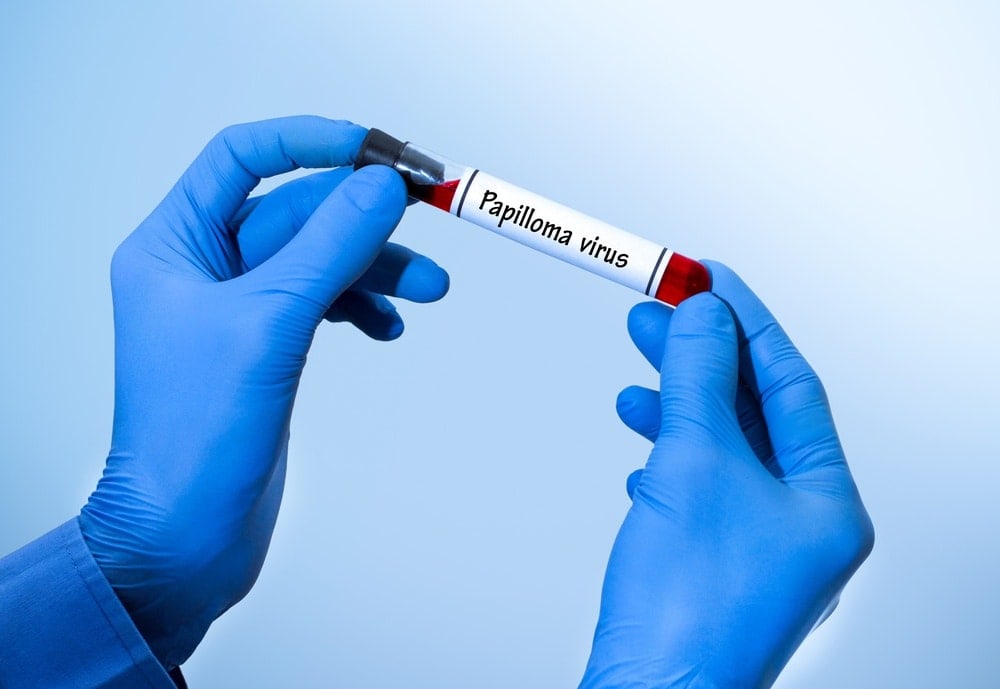HPV, the Genital Human Papillomavirus, is a viral infection that manifest with genital warts. During pregnancy, changing hormone levels can make warts grow faster than usual. A pregnant woman’s body also produces an increased amount of vaginal discharge, which gives warts a warm, moist place to thrive.
How is HPV diagnosed during pregnancy?
OB-GYNs usually don’t test for HPV during pregnancy unless they have a reason to. Diagnosing HPV usually occurs if your doctor finds warts or during a routine Pap test. During a Pap test, your doctor uses a swab to remove a small number of cells from your cervix. They send this sample to a lab and test it for precancerous cells. The presence of precancerous cells may indicate that you have HPV.
If you’re over the age of 30, your OB-GYN can now also give you an HPV DNA test, along with the Pap test. This test can detect whether you have a type of HPV that can cause cervical cancer.
What are the symptoms of Human Papillomavirus?
In most cases, there are no symptoms. Many people have HPV and do not know it. Some people will experience genital warts on the penis, scrotum, labia, vagina, cervix, or anus.
Can having HPV lead to other problems?
Most people that are infected with HPV feel fine and do not even know they are infected. HPV can cause genital warts which may return after treatment. HPV may cause pre-cancerous cells on the cervix resulting in abnormal Pap smears.
It may also lead to cancer of the cervix, labia, anus, or penis. There is no cure, which means that once you contract it, it can be a life-long infection. The good news is that the body’s natural immune system appears to get rid of the infection.
However, this may take months to years. Even though there are no visible symptoms, it may still be transmitted to another person.
How is it transmitted?
HPV is transmitted by genital skin-to-skin contact, which in most cases is through sexual activity including oral, anal, and vaginal intercourse. It may be transmitted even if someone does not exhibit symptoms.
How is it diagnosed?
It is diagnosed by one of the following ways:
- Pelvic exam looking for warts
- Pap smear of the cervix to look for pre-cancerous/cancerous cells
- Biopsy (removing a piece of tissue) of warts, cervix, or other genital areas
The liquid-based Pap test is significantly more effective for detecting abnormal cervical cells than the conventional Pap smear. For the liquid-based Pap test, your health care provider will put the collected cells into a liquid, rather than smearing them onto a slide.
This allows more cells to be preserved and minimizes blood, mucus, and inflammation. Most health care providers agree that the liquid-based Pap test is advised for women who have or are at risk of contracting HPV.
In 2003, the FDA approved a screening test that can be done in conjunction with a Pap test to determine if you have the HPV virus. The HPV DNA test can detect high-risk types of HPV, such as types 16 and 18, before any abnormal cells can be detected on the cervix.
This screening is recommended for women over the age of 30, who are at an increased risk of a chronic HPV infection turning into pre-cancerous cells.
Men can carry and transmit HPV infection without ever having symptoms. At this time, there is no test to detect it in men.
What is the treatment for HPV?
There is currently no cure for the HPV infection for those people whose immune system cannot eliminate the virus on its own. Warts may be treated or removed with chemicals, freezing, burning, laser, or surgery.
Researchers believe that cervical cancer is directly related to Human Papillomavirus (HPV). There are over 100 different types, including about 30 types that are spread through sexual transmission and can possibly lead to cervical cancer. HPV causes approximately 70% of cervical cancer, but most women who receive treatment for HPV do not develop cervical cancer.
Most pre-cancerous cells on the cervix can be treated with freezing, burning, laser, or surgery. If the abnormal cells have turned into cancer, it can be treated through surgery, radiation, and/or chemotherapy. With proper screening, cervical cancer is preventable and avoidable.
Can HPV be prevented?
Gardasil is a vaccine that may help guard against some HPV related diseases by possibly preventing HPV Types 6, 11, 16 and 18. There are approximately 30 other sexually transmitted HPV types that Gardasil does not prevent against.
Gardasil is given as a series of 3 injections over 6 months. Gardasil does not treat existing HPV infections, but most HPV infections resolve on their own.
Minor adverse reactions to the Gardasil vaccine include pain, swelling, fever, and nausea. More severe reactions include headache, inflammation of the stomach, and arthritis.
Because Gardasil contains aluminum (aluminum hydroxyphosphate sulfate), the vaccine is not recommended for women who are pregnant or may become pregnant.
There are only two ways to prevent HPV. The first is to refrain from sexual contact of any kind. The second is to be in a long-term monogamous relationship such as marriage, with a person who has not had any other sexual partners.
There is no scientific evidence that condoms greatly reduce your chances of getting genital HPV.
HPV affects nearly 6,200,000 new individuals each year. There are over 100 different types, including about 30 types that are spread through sexual transmission. Approximately 20 million Americans are currently infected with HPV. Between 50-75% of sexually active men and women have an HPV infection at some time in their life.
Compiled using information from the following sources:
1. Centers for Disease Control and Prevention
2. “Scientific Evidence on Condom Effectiveness for Sexually Transmitted Disease Prevention,” in Sex, Condoms, and STDs: What We Now Know published by the Medical Institute for Sexual Health.
3. U.S. Food and Drug Administration: https://www.fda.gov
4. Merck & Co., Inc.: https://www.merck.com/






